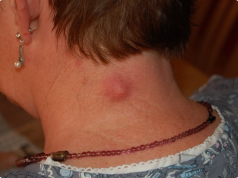If you’ve ever used a safety pin, you may have noticed a small, seemingly insignificant hole near the head of the pin. While it might appear to be an imperfection or a quirk of manufacturing, this tiny hole actually serves a very practical purpose. Let’s dive into the history, functionality, and clever design behind this feature to uncover why it exists—and why it’s more useful than you might think.
The History of the Safety Pin
Before we explore the purpose of the tiny hole, let’s take a moment to appreciate the invention of the safety pin itself. Patented in 1849 by American inventor Walter Hunt, the safety pin was designed as a simple yet ingenious solution for securing fabric without the risk of pricking yourself. Its coiled spring mechanism and protective clasp made it safer and more versatile than traditional straight pins. Over time, the safety pin became a staple in sewing kits, first aid supplies, and even fashion statements (hello, punk rock aesthetics!).
But what about that little hole? It’s not just a random detail—it’s a testament to thoughtful design.
The Purpose of the Tiny Hole
The tiny hole in a safety pin serves multiple purposes, depending on how it’s used. Here are the primary reasons it exists:
1. Thread or String Anchoring
One of the most common uses for the tiny hole is threading. When sewing or crafting, the hole allows you to anchor thread, yarn, or string securely to the safety pin. This is especially helpful when:
- Basting Fabric: Use the safety pin to guide thread through layers of fabric while keeping everything aligned.
- Threading Beads or Buttons: Attach thread to the pin and use it as a makeshift needle for hard-to-reach areas.
- Crafting Projects: Secure ribbons, cords, or other materials to the pin for easy handling during DIY projects.
2. Emergency Button Replacement
In a pinch, the tiny hole can act as a makeshift button. Simply thread the hole through a garment’s buttonhole and secure the pin in place to temporarily replace a lost button. It’s a quick fix that can save your outfit in an emergency!
3. Hanging or Securing Items
The hole can also be used to hang lightweight items like keys, charms, or tags. For example:
- Use the safety pin to attach ID tags to clothing or bags.
- Hang small decorations or accessories by looping them through the hole.
4. Medical or First Aid Applications
Safety pins are often included in first aid kits for their versatility. The tiny hole adds functionality in medical scenarios, such as:
- Securing bandages or gauze by threading them through the hole for extra stability.
- Creating a makeshift tourniquet or splint by anchoring fabric or rope.
5. Jewelry Repair or Customization
For jewelry enthusiasts, the tiny hole can come in handy when repairing or customizing pieces. It allows you to manipulate wires, chains, or threads with precision, making it a valuable tool for crafting or fixing broken jewelry.
Why Is This Design So Clever?
The inclusion of the tiny hole demonstrates the ingenuity of simple tools. By adding this small feature, manufacturers enhanced the safety pin’s functionality without compromising its simplicity or durability. It’s a perfect example of how good design anticipates user needs—even ones you might not realize you have until the moment arises.
Creative Uses for the Tiny Hole
Beyond its practical applications, the tiny hole has inspired countless creative uses. Here are a few ideas to try:
- DIY Keychains: Thread a piece of string or wire through the hole to create a unique keychain holder.
- Embroidery Helper: Use the hole to guide embroidery floss through thick fabrics or tight spaces.
- Temporary Zipper Pull: If a zipper pull breaks, loop a safety pin through the zipper tab using the hole as an anchor.
That tiny hole in a safety pin is far from accidental—it’s a purposeful design element that adds versatility and utility to an already indispensable tool. Whether you’re sewing, crafting, or solving everyday problems, this small but mighty feature proves that sometimes the simplest solutions are the most effective.
Next time you reach for a safety pin, take a closer look at that tiny hole. You might just find yourself inspired to put it to use in ways you never imagined!










